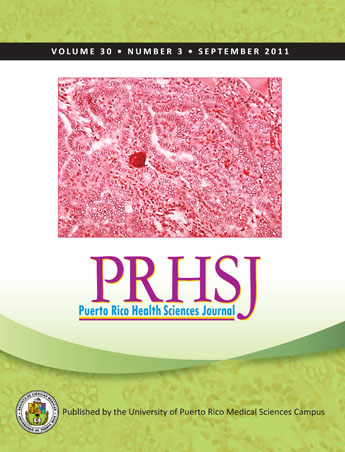Abstract
Objective: Vagus nerve stimulation (VNS) is considered an alternative treatment for patients with medically refractory epilepsy who are not candidates for resective surgery. It consists of intermittent electrical stimulation of the left vagus nerve in the neck. Such stimulation has been demonstrated to be efficacious, safe, and well tolerated, offering these patients another option for seizure control. The aim of this study was to evaluate the experience of VNS at the University of Puerto Rico, and to examine demographic data, types of seizures, and seizure-control outcomes among treated subjects. This study is the first account of VNS in a pediatric population living in the Caribbean area. Methods: A retrospective analysis of 13 patients treated at the University Pediatric Hospital in San Juan, Puerto Rico, was undertaken. Different types of seizures were identified and managed. Results: The mean age at implantation was 12 years; 77% of patients were female. The most common type of seizure treated was generalized tonic-clonic (24%), followed by complex partial (23%). Sixty-nine percent of patients demonstrated a reduction in monthly seizure frequency. Ninety-three percent of caregivers reported improvements in alertness and communication. Conclusion: Vagus nerve stimulation is a safe and effective way to treat medically refractory epilepsy and should be considered as a non-pharmacological treatment for select patients with medically refractory epilepsy.
Authors who publish with this journal agree to the following terms:
a. Authors retain copyright and grant the journal right of first publication with the work simultaneously licensed under a Creative Commons Attribution License that allows others to share the work with an acknowledgement of the work's authorship and initial publication in this journal.
b. Authors are able to enter into separate, additional contractual arrangements for the non-exclusive distribution of the journal's published version of the work (e.g., post it to an institutional repository or publish it in a book), with an acknowledgement of its initial publication in this journal.
c. Authors are permitted and encouraged to post their work online (e.g., in institutional repositories or on their website) prior to and during the submission process, as it can lead to productive exchanges, as well as earlier and greater citation of published work (See The Effect of Open Access).
